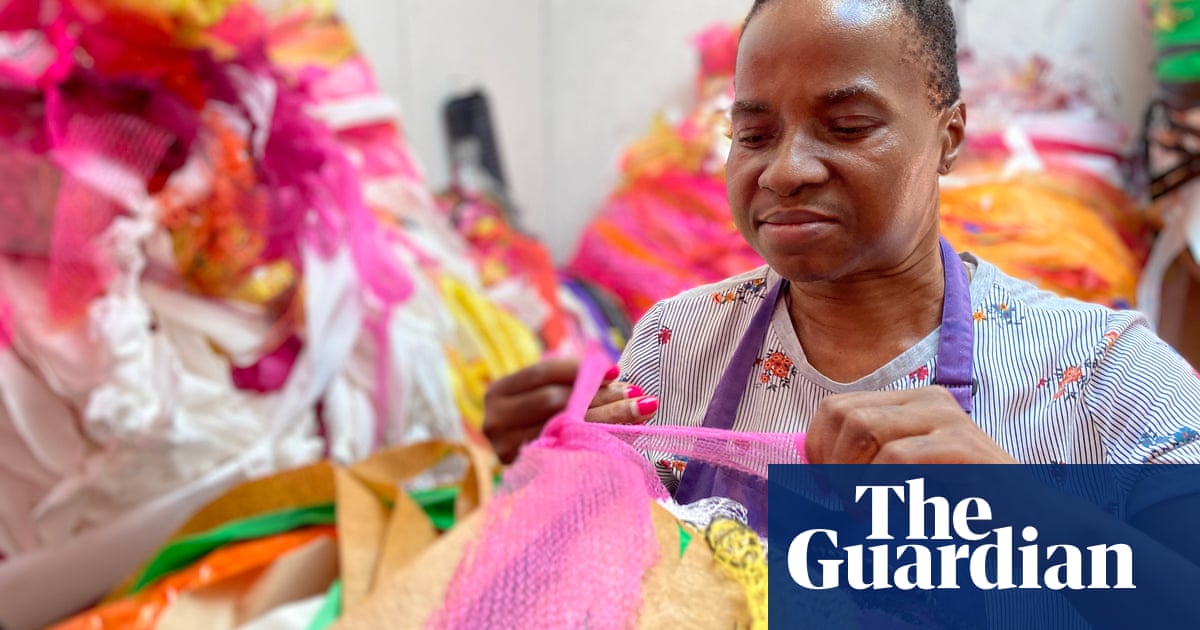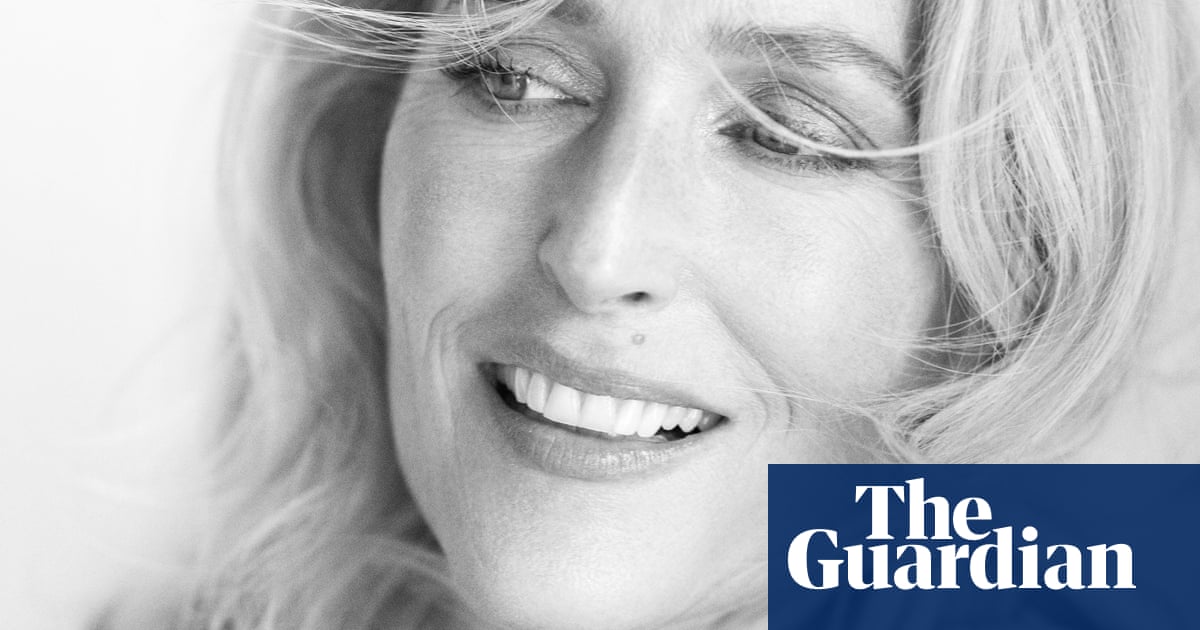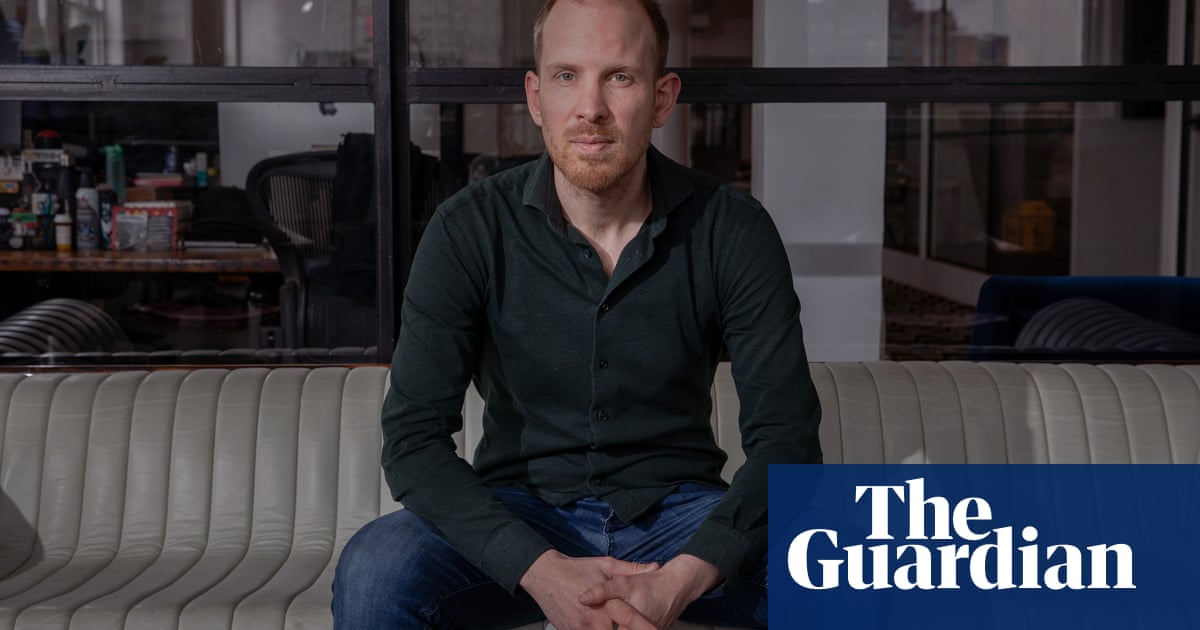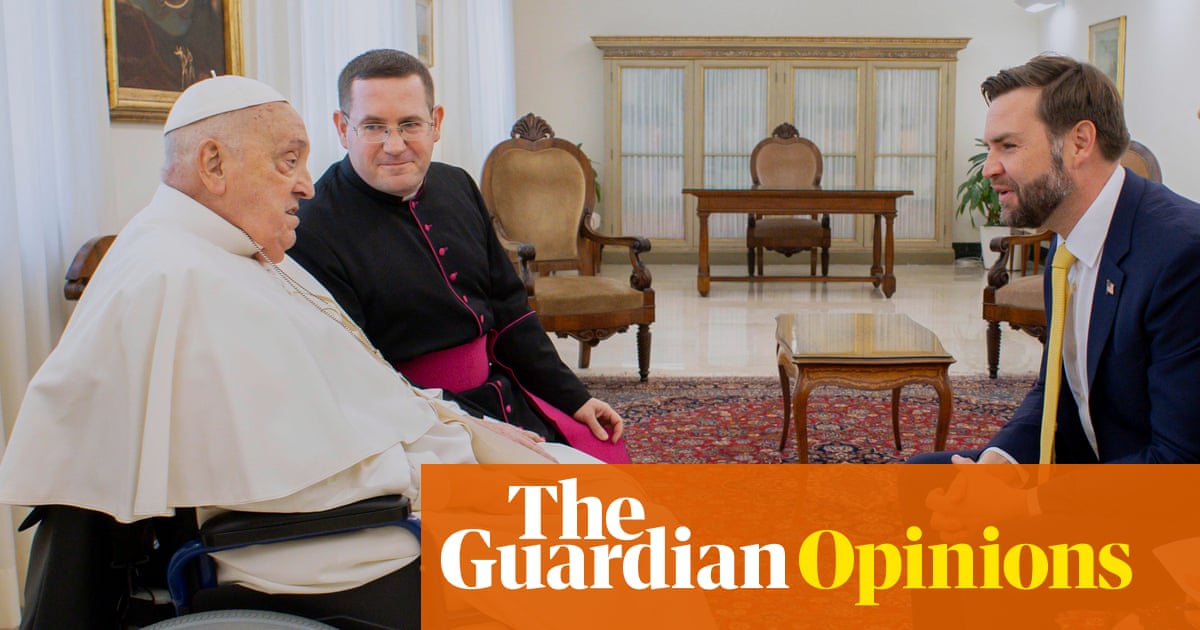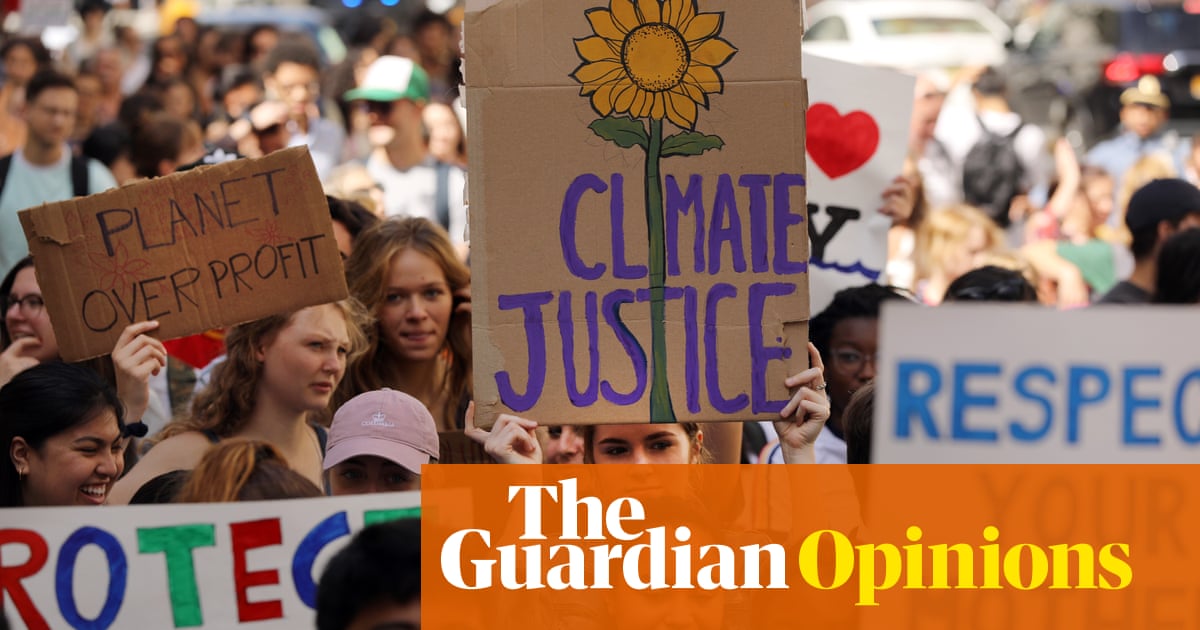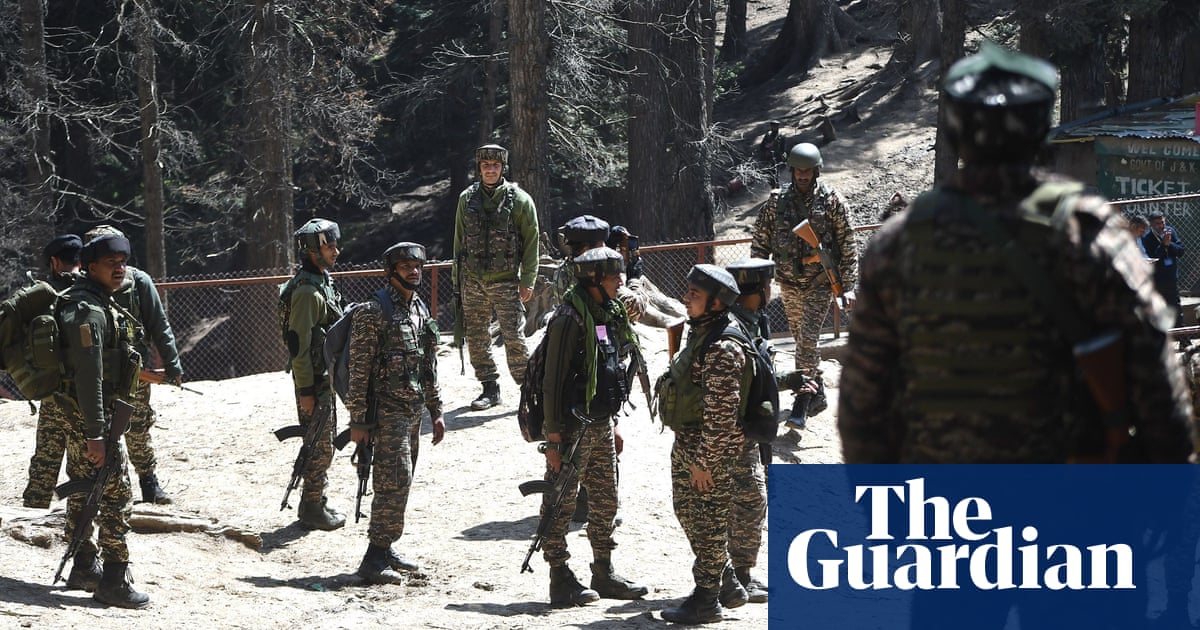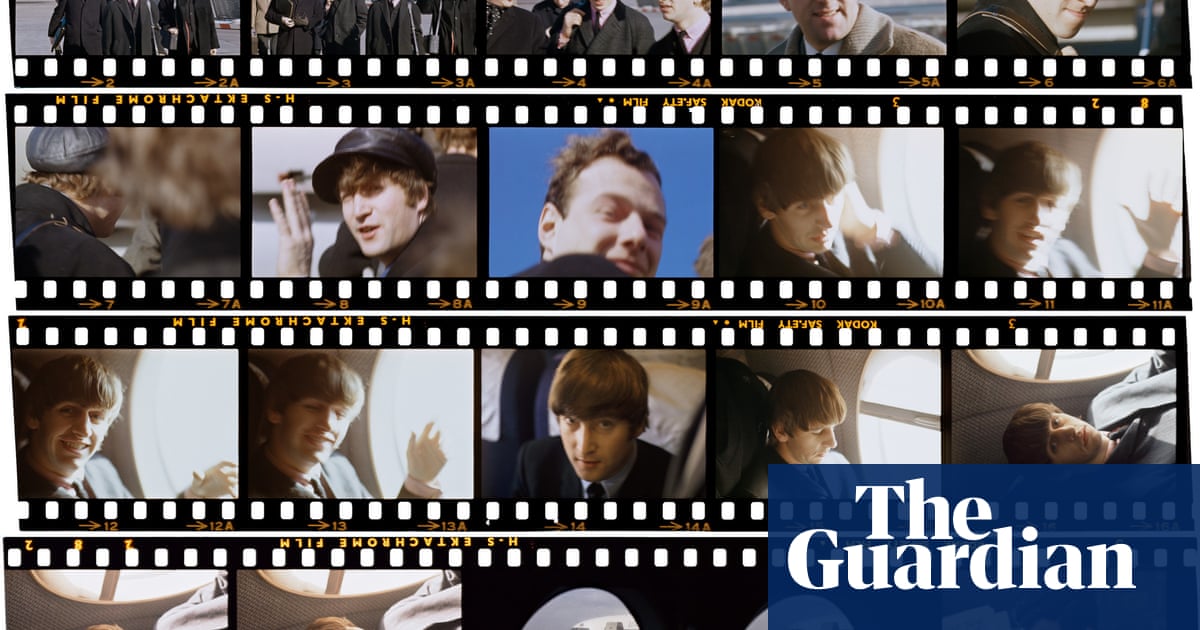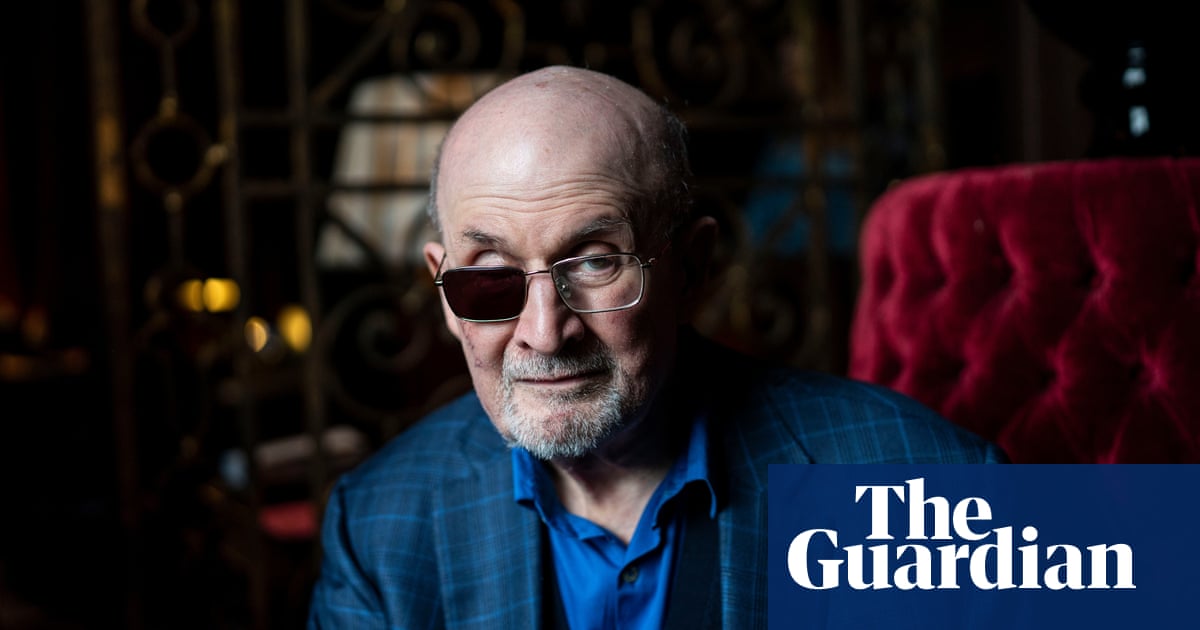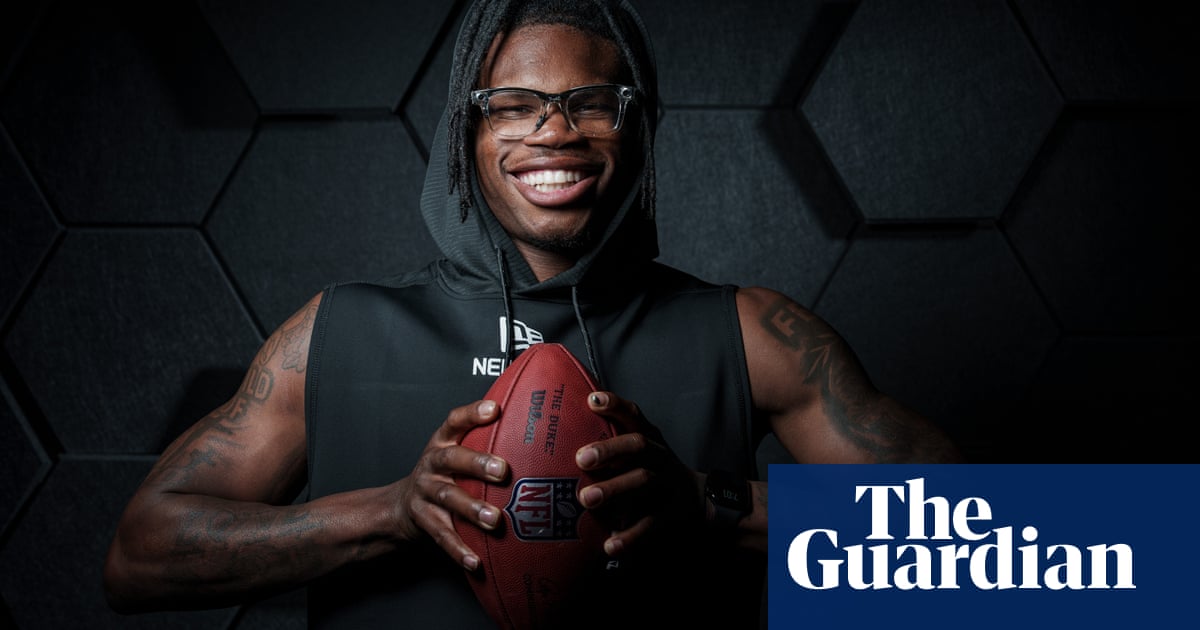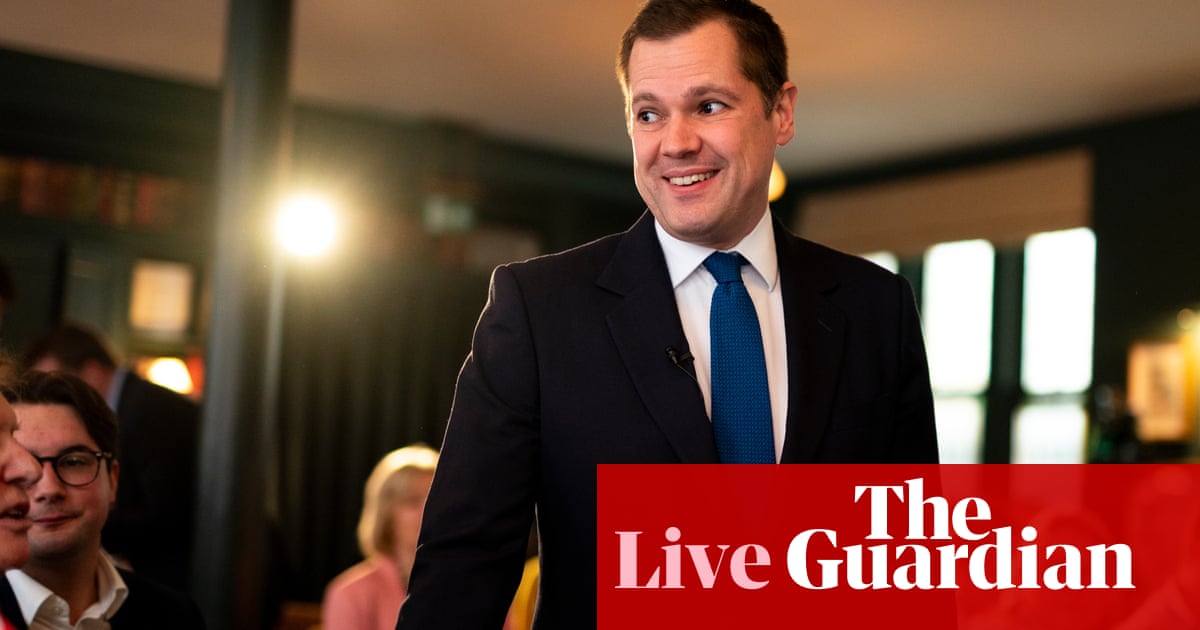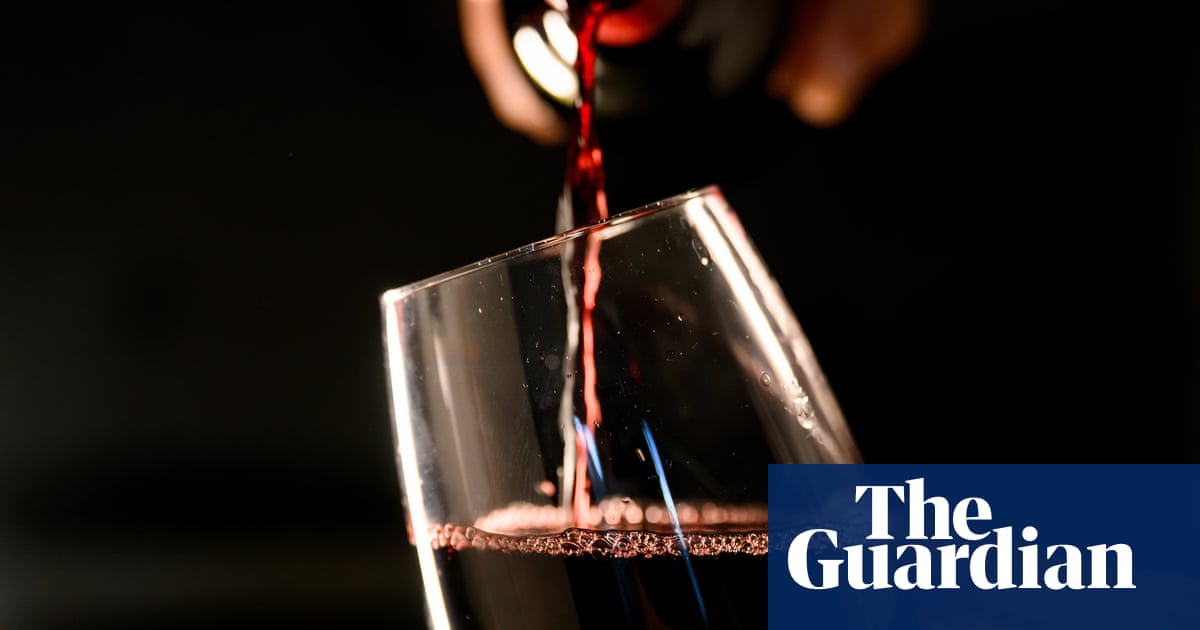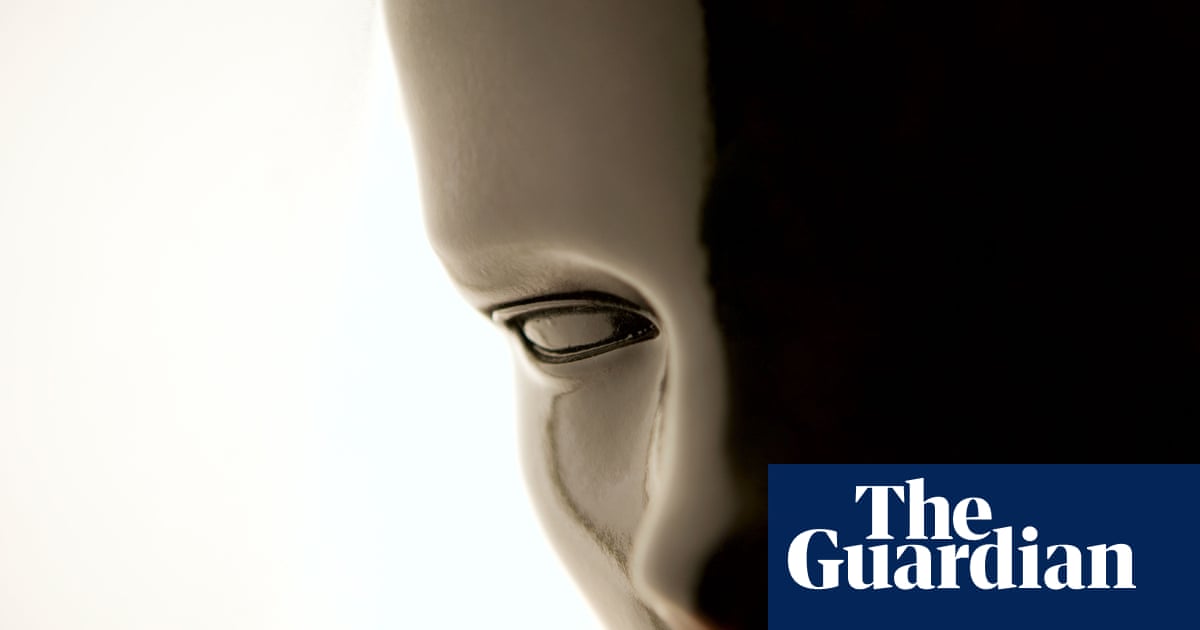There is no image more compelling to us than to see another human being naked. Thouusands of years of evolution and desire, of empathy and curiosity, hardwire us to stare. The sight is visceral, electrifying, irresistible. It is familiar and forbidden; innocence and sin. The naked body is there in the bathroom mirror every morning, but to see another always feels like stumbling on a secret. A salt-twist of narcissism heightens our emotions, so that looking at a nude feels very different from admiring a watercolour landscape. Ethics come into it. In the history of portraiture, it is the nudes that are the most honest, or the most exploitative – or sometimes both.
Photographs are part of the fabric of everyday life for all of us, in a way charcoal sketches or oil paintings are not. So when a nude is not a sketch or a painting but a photograph, the intensity ratchets up. The polite distance of the art gallery experience is stripped away, leaving gut reaction and raw emotion. All of which is to say: nothing like a nude photograph to get you by the jugular.
At any given moment in culture, the bodies we see around us reflect the thoughts that are in our heads. Fertility, in early art. The heroism and physical prowess of the male body, in the classical era. An obsession with a narrow definition of womanly beauty, as gender roles diverged. The body means something new in every era. Nudity is not as simple as it looks.
And above and beyond all of this, the body is beautiful. In Richard Avedon’s 1961 portrait of Rudolf Nureyev, the fine-boned delicacy of his ribs is breathtaking next to the gnarled sinews of his haunches. The sweet grace of his arms tells the story of how he changed dance by copying the gestures of female ballet dancers. The determined jut of his chin seems to hint at the story of his defection from the Soviet Union, just a month before this portrait. His lush nakedness surely foretells the sexual revolution that is about to spring into action. No wonder this was the man on whom Mick Jagger is said to have modelled his iconic frontman prance.
The body is politicised terrain. Gender and race are laid bare. Pornography looks over your shoulder, while you look. The history of nude photography – particularly portraits of naked women, taken by (presumably fully dressed) men – is the history of objectification. Jean-Paul Goude’s portrait of Kim Kardashian is an artefact of a changing hierachy of female beauty, in its unabashed celebration of her bottom. A giant peach at the dead centre of the shot, it is the bullseye on which the studio lights are trained. This is the photograph that will show future generations that bottoms were to the early 21st century what breasts were to the late 20th. But there is so much more going on besides. An echo of Man Ray’s 1924 image Le Violon d’Ingres, a rear view of model Kiki de Montparnasse, sound holes painted on her back turning her body into a violin. But while de Montparnasse gazes impassively away, Kardashian makes eye contact with the camera. Trappings of her wealth and status – diamonds, champagne, opera gloves – emphasise her agency, in the billion-dollar empire she has built on this body.
These photographs trace the parameters of what is beautiful and what is ugly, what is normal and what is strange, what is acceptable and what must be hidden. Born in 1811, conjoined twins Chang and Eng Bunker were exploited as a circus act for much of their lives, paraded for shock value. In the portrait here we see them smartly dressed, meeting our gaze proud and unruffled. We are invited to see them not as freaks but as equals. A century and a half later, model Winnie Harlow, who has depigmentation from vitiligo, challenges us again to rethink what we expect to see on a glossy Vogue cover. Nadav Kander’s portrait of actor Adam Pearson, whose face is distinctively shaped by the benign tumours caused by neurofibromatosis, is deliberately simplistic in its composition. A peaceable stillness interrogates any instinct to look away.
Sometimes, looking at the body takes place within the frame. Haley Morris-Cafiero’s self-portraits, Wait Watchers, are a snapshot not of her body size but of society’s judgment of it. The artist stands to the right of this photo, staring at us, while the beautiful young couple to the left seem to be staring at her. The empty space in the middle of the frame asks us to pick a side. Elliott Erwitt’s photograph of Arnold Schwarzenegger draws you in with those giant muscles. Then you notice another audience, who got there before you. Hundreds of faces are tilted up to the podium, transfixed into stillness, as if Arnie has just stepped out of a spaceship, or a time machine from the future.
The human body is a breathtaking machine of mind-boggling complexity and heart-stopping resilience. We are awestruck by the tiny “Benetton baby”, captured by Oliviero Toscani, umbilical cord intact and already bellowing with fury. Joe McNally’s portrait of Phan Thi Kim Phuc and her baby is a historical record of her napalm injuries, but the trust and tenderness in their closed eyes, skin-on-skin cuddle transforms it into a story not of war and violence, but of peace and love. Body language can be tragedy, drama, romance – even comedy, as in Aleksei Goloborodko, the most flexible man in the world, juxtaposing his unique contortion skills with the market-stall familiarity of his Nirvana hoodie.
These photographs show us our bodies as we have never seen them before. Edward Weston’s captures a transcendental elegance in his lover Charis, as she dips her face from view like a resting swan tucking its head beneath a wing. The late Ren Hang, whose nude portraits of queer Chinese youth challenged government censors, lines up a mountain range of undulating bottoms. Arno Rafael Minkkinen’s self-portrait, pale limbs sandwiched between those of a silver birch, has a mischievous otherworldliness. It is as if you could step inside the frame, and into a magical world. There is nothing like an image of a body to expand your mind.
Picture captions by Hannah J Davies and Gabrielle Schwarz
Le Violon d’Ingres, 1924
By Man Ray

When the artist Man Ray photographed the back of his model and lover Kiki de Montparnasse, then layered a violin’s f-shaped holes over the print, it became one of surrealism’s defining images – and sparked debate about the power dynamics between artist and muse, and objectification of the female body. In 2022, it sold for £9.8m at auction – the most for any photograph in history – and a century later, people still get tattoos of the marks in homage.
Generation Wealth, 1998
By Lauren Greenfield

Her photography and films may have explored extreme wealth, society, body image and how they come together in a poisonous cocktail of self-interest and envy, but Lauren Greenfield retains a nuance and empathy even when examining the most rarefied members of society. In her 2018 documentary Generation Wealth, she met people before and after plastic surgery, among them Sydelle, who had a facelift in 1998 and is shown recovering after the procedure, with raw, peeling skin. Sydelle told Greenfield, “When I was in my 20s, people would always ask if I was a model. And then it got to, ‘Did you model?’ in the past tense. Now they don’t even ask me that. In American culture, unless you’re young, thin and beautiful, you’re discarded.” HJD
Winnie Harlow for Vogue Netherlands, 2023
By Nikki Esser

The past decade has seen a shake-up in the world of fashion, with the biggest magazine of all showcasing more diversity than ever. In 2023, Canadian supermodel Winnie Harlow, who has the skin condition vitiligo, graced the cover of Vogue’s Dutch edition in this shoot by Nikki Esser. In the interview inside, Harlow said, “I’m starting to see more models with vitiligo, I think that’s so beautiful. When I was little, I felt like I was the only person in the world with it.” HJD
Kim Kardashian breaks the internet, 2014
By Jean-Paul Goude

The day after Kim Kardashian appeared bare-bummed on the cover of Paper with the headline BREAK THE INTERNET in 2014, the magazine’s website accounted for nearly 1% of all online browsing in the US. In another image from the shoot, she pops champagne with a coupe glass balanced on her behind, flaunting the “slim thick” beauty standard (tiny waist, big bottom) Kardashian and her sisters popularised in the 2010s. The images sparked memes, outrage and imitations, as well as serious considerations about the look’s racial history. The champagne photo is a re-creation of Jean-Paul Goude’s controversial Carolina Beaumont image from 1976. The internet may not have been broken, but it was shaken. GS
Rudolf Nureyev, Paris, July 25, 1961
By Richard Avedon

Richard Avedon took this portrait of Rudolf Nureyev in Paris in July 1961, a month after the ballet superstar defected from the Soviet Union while on tour with the Kirov company. Nureyev transformed the role of the male dancer in ballet, advancing a physique and technical standard closer to what was expected of female dancers at the time – and assuming centre stage in the process. Here, Avedon’s trademark sparse white background ensures all the focus is on Nureyev’s gravity-defying pose. GS
Adam Pearson, 2024
By Nadav Kander

Former TV researcher Adam Pearson got his big break as an actor in the 2013 film Under the Skin. His facial condition – attributed to neurofibromatosis, which causes non-cancerous tumours to grow along nerves – was a key plot point, creating a moment of connection between a human character, played by Pearson, and Scarlett Johansson’s alien protagonist. His most recent film, A Different Man, saw him act opposite Sebastian Stan and continue to challenge ideas around image and prejudice. In this portrait by Nadav Kander, Pearson is rendered in an almost painterly, old master fashion. “I often say my disability is the least interesting thing about me,” he told the Guardian recently. “Don’t get me wrong, it’s still pretty goddamn interesting. But there’s more to me than that.” HJD
Nude (Charis, Santa Monica), 1936
By Edward Weston

Art critic Hilton Kramer wrote that for modernist photography pioneer Edward Weston, the body was a “revelation of forms both voluptuous and abstract”. Here, his assistant (later wife) Charis Wilson is seen as a kind of sculpture. “When I ducked my head to avoid the bright light,” she later recalled, “Edward said, ‘Just keep it that way.’” GS
Untitled, 2012
By Ren Hang

“China doesn’t allow outdoor nudity,” Ren Hang once said. “I’m careful taking pictures outside. If I see police, I’ll run. But I’m not hiding.” The self-taught photographer regularly ran into trouble in Beijing for his erotically charged images of naked figures arranged in striking and surreal poses. He nearly always used friends as models – often queer Chinese youths – giving precise instructions, then snapping with a simple point-and-shoot camera. Sometimes the subject appears in nature or the city; other times – as in this sea of bums – inside. In Hang’s photos, curator Nathalie Herschdorfer writes in Body: The Photography Book, “bodies are mingled in a playful and sensual way” through creative composition. GS
Untitled, 1999
By Alison Lapper

She is perhaps best known as the subject of Marc Quinn’s 3.6m-tall marble sculpture, created while she was pregnant with her late son Parys, which sat atop the fourth plinth in London’s Trafalgar Square from 2005 to 2007. But Alison Lapper’s own contributions as an artist – including a first class honours degree in fine art and an MBE for her services to art – should not be overlooked. Having noticed physical similarities between her own body and the ancient Greek statue the Venus de Milo, Lapper – who was born with shortened legs, and without arms – has represented herself in sculptures, photographs, drawings and digital images. In this triptych of self-portraits, the artist, who overcame child cruelty and later suffered domestic abuse, is shown first defiantly staring down the camera, then gazing away mysteriously and finally, with her back turned fully to the camera, withdrawing herself from view. HJD
Oscar Pistorius on the cover of Time, 2013
By Pieter Hugo

Rarely has a fall from grace been as shocking as that of trailblazing Paralympian Oscar Pistorius, jailed in 2014 for killing his girlfriend Reeva Steenkamp. The Time cover image, taken by Pieter Hugo for the New York Times, was to become one of the last pictures of Pistorius as we knew him: during his trial, he removed his famous “blades”, highlighting what his defence described as his vulnerability when he fired at Steenkamp, whom he claimed to have mistaken for an intruder. HJD
Sunscreen, 2014
By Haley Morris-Cafiero

“It was almost scientific and clinical – I call them mundane performances.” So says Haley Morris-Cafiero of her Wait Watchers series, which saw the photographer and academic set up her camera in crowded locations – among them Florida’s Ormond Beach – to capture herself (on the right here) and the looks of passersby. As for what was really going through their heads, Morris-Cafiero says she “can’t speculate … But the images I chose capture those open-ended moments. There were other images where people were obviously making fun of me, and those were not nearly as interesting because you know what’s happening.” Her images went viral and became “one of the catalysts for a body image conversation, which is wonderful”. HJD
New Born Baby (Giusy), 1991
By Oliviero Toscani

“Why would you want to see clothes in an advert? If you want to see the clothes you can see them in our shops.” This irreverent statement sets out the logic behind the controversial ad campaigns Oliviero Toscani masterminded during his tenures as art director of Benetton, from 1982 to 2000 and 2017 to 2020. For Toscani, who died last month, advertising was about grabbing people’s attention: his best-known campaign images included a man dying of Aids, a priest and a nun kissing, and two horses copulating. He argued that his work also put important social issues in the spotlight but, unsurprisingly, the ads drew criticism for their insensitivity. This raw image of a newborn girl named Giusy, with the umbilical cord attached, is among Toscani’s most censored images. GS
Property of Jo Spence?, 1982
By Jo Spence

British activist, writer and photographer Jo Spence was diagnosed with breast cancer in 1982. She began documenting her illness and treatment in a four-year series entitled The Picture of Health. This was not just a way to process her experience but also a “research project on the politics of cancer” – challenging the hierarchies of the medical establishment and shifting power back to the patient. Doctors had told Spence she needed a full mastectomy to remove the cancer but, after extensive research, she insisted on a lumpectomy, and took this self-portrait while preparing for it. The uncertainty of the words scrawled over her left breast alludes to the traumatic ordeal of being “marked up for amputation” by doctors. Spence described the image as “a pre-operative talisman to remind myself I had some rights over my own body”. GS
Väisälänsaari, Finland, 1998
By Arno Rafael Minkkinen

The Finnish American photographer Arno Rafael Minkkinen has been taking his nude self-portraits in nature for more than half a century. This image of him squeezed between birch trees in Finland exemplifies his decades-long project of merging his body with the natural world. “The idea of slipping between these two dalmatian dudes”, as he calls the trees, was to show “we are basically equal in the visual camp of things. We are just like the trees that grow, thrive and eventually tip over back into the earth or lakes.” GS
The original conjoined twins, 1865
Photographer unknown

Born to Chinese heritage parents in 1811 in Siam (now Thailand), Chang and Eng Bunker were joined at their sternum and via fused livers. They were brought to the US as a circus act and went on to settle in North Carolina and marry sisters with whom they fathered 21 children. They died aged 62, hours apart. The siblings are shown here in their later years, finely dressed but looking serious. Their biographer, Yunte Huang, says, “In early photography, people worried that the more pictures you took, the more of your soul you were going to lose, so you wouldn’t smile.” HJD
Sonam, 2023
By Steph Wilson

What does a mother look like? That is the question driving photographer Steph Wilson’s ongoing Ideal Mother project, and it prompted wig-maker and hair artist Sonam to suggest wearing a prosthetic moustache modelled on her father’s from the 1970s. She also chose to wear a bindi in homage to the culture of her motherland. The image, with its playful mix of masculine and feminine elements, won the 2024 Taylor Wessing photographic portrait prize – and a negative public response that took Wilson aback. “The policing of motherhood seemed to be more of an issue than I’d first understood,” she says. GS
The most flexible man in the world, 2018
By Heidi’s Bridge

Russian-born Aleksei Goloborodko, a contortionist with Cirque du Soleil’s Luzia show, has been dubbed the most flexible man in the world. Goloborodko – seen here in an image originally published in GQ magazine – began contorting his body at the age of four, and dreamed of joining Cirque du Soleil from the age of eight, when he first auditioned for the company in Moscow. The 30-year-old trains for five or six hours a day, comprehensively stretching his body before he begins. His act elicits different reactions. “Sometimes audiences are scared, sometimes impressed, and sometimes they have no words,” Goloborodko said in a video filmed by the circus producer. “To see people think it’s a miracle, that’s the biggest motivation I can get.” HJD
Two Men Fencing, 1887
By Eadweard Muybridge

In 1872, rail magnate Leland Stanford hired Eadweard Muybridge to find out if horses lift all four legs off the ground when they run (they do). Between 1883 and 1886, using multiple cameras with high shutter speeds, Muybridge made 100,000 further images of animals and humans moving in front of a precise grid. “History remembers him in fragments,” wrote Rebecca Solnit (also his biographer), “as a landscape photographer, as a technical innovator, as a key figure in the long march to motion pictures.” GS
Lisa Lyon, 1982
By Robert Mapplethorpe

Lisa Lyon started weight-training after meeting Arnold Schwarzenegger in 1977. Two years later she became a minor celebrity when she won the first professional female bodybuilding championship. For Lyon, it wasn’t just about fitness, but “creating a new aesthetic and a new standard of beauty”. She wanted to appear neither masculine nor feminine but like “a sleek, feline animal”. Robert Mapplethorpe, known for his stylised black and white portraits, met Lyon at a party in 1979. “I had never seen a woman like that before. It was like looking at someone from another planet,” he said. Their collaboration resulted in 200 pictures in the next few years. GS
Serena Williams in the Pirelli calendar, 2016
By Annie Leibovitz

For decades, the Pirelli calendar was known for its artful, risque images of supermodels. But in 2016 the Italian tyre company broke tradition, hiring Annie Leibovitz for a series of portraits celebrating women for their professional accomplishments. According to Leibovitz, this shot of tennis superstar Serena Williams with her muscular frame on full view is “not a nude but a body study”. Williams herself is a vocal advocate for body positivity and diversity. As she once put it, “I love representing the beautiful dark women out there.” GS
Sydney 1 (Opera House), 2010
By Spencer Tunick

He began photographing people naked on the streets of New York at sunrise in 1992, and soon Spencer Tunick was staging mass nude shoots in public spaces around the world, winning fans including Lady Gaga. Here, 5,200 people gather on the steps of Sydney Opera House. Grouped together, the bodies lose their individuality. As one participant said, “It doesn’t feel sexual, it just feels tribal, a gathering of humanity.” Tunick’s goal is to challenge views of nudity and privacy. “Before I worked with groups outdoors, the only place to see nudes was old paintings, rock albums or tourist postcards,” he says. GS
The Pregnant Man, 2008
By Kristian Dowling

“I had seen them on Oprah and had all these preconceived ideas,” Kristian Dowling says of his first meeting with Thomas Beatie and his then wife Nancy. As a photographer for Getty Images, Dowling had pinballed straight from the Cannes film festival to the small city of Bend, Oregon. There, he would spend two weeks with the transgender dad-to-be, who was becoming a tabloid fixture in an era when positive trans representation was rare. But, to Dowling’s surprise, the “pregnant man” and Nancy were “just a normal couple, who desperately wanted a child … two people madly in love”. HJD
The man behind Body Worlds, 2003
By Murdo MacLeod

Gunther von Hagens was once described by the Guardian as having cultivated an image that is “part Dr Frankenstein and part Leonardo da Vinci”. The German anatomist, pictured opposite one of his creations, has preserved thousands of dead bodies by adding plastic polymers in place of fat and water. While they were initially made for medical teaching, public interest led him to show them at his wildly popular Body Worlds exhibitions, changing the way millions of people have viewed their own bodies. Perhaps unsurprisingly, von Hagens plans to undergo plastination when he dies. HJD
Untitled, 1985
By Rotimi Fani-Kayode

The late photographer came to Britain in 1966, aged 11, after his family fled the war in Nigeria. His trailblazing nude portraits capturing Black, queer life in 1980s London challenged the homophobia of Margaret Thatcher’s England during the Aids crisis. “Photography is the tool by which I feel most confident in expressing myself,” he wrote. “It is photography, therefore – Black, African, homosexual photography – which I must use not just as an instrument, but as a weapon if I am to resist attacks on my integrity and existence on my own terms.” HJD
Humanae: Work in Progress, ongoing
By Angélica Dass

Skin colour is often summed up by racial categories such as “black” and “white”, but there is a much greater spectrum. Angélica Daas’s Humanae series takes that reality very seriously, matching subjects – 4,000 and counting, from all around the world, and from newborn babies to those nearing the end of their lives – to their exact Pantone colour equivalent. In a 2016 Ted Talk, the Black Brazilian photographer explained how combating racism had informed her work. “Those portraits make us rethink how we see each other,” she said, calling them a “mirror for those who cannot find themselves reflected in any label”. HJD
Self-Portrait (Back with Arms Above), 1984
By John Coplans

A veteran of the second world war, British artist John Coplans spent much of his life in the US, where he lectured on design at the University of California, Berkeley, before going on to become one of the founding editors of the magazine Artforum, as well as a museum curator. In the 1980s he published books on photographers and began his own photographic experiments, which he called auto-portraits and created using a live-feedback video camera with an automatic shutter. In a 1990 interview, Coplans said, “The principal thing is the question of how our culture views age: that old is ugly … So I’m using my body and saying, even though it’s a 70-year-old body, I can make it extremely interesting.” HJD
Phan Thi Kim Phuc with her son, 1995
By Joe McNally

Phan Thi Kim Phuc was just nine years old when she was depicted running naked from a napalm attack in South Vietnam, in a Pulitzer prize-winning photograph credited to Nick Ut and titled The Terror of War (the authorship of the photo has recently been disputed). Phuc, widely known as “napalm girl”, has gone on to become a Canadian citizen, Unesco goodwill ambassador and peace activist. Photographer Joe McNally got the opportunity to photograph her 23 years later and recalls, “I was very direct with her. I said, ‘Look, Kim, I have to see your scars. I have to see the damage that was done.’ And she understood.” There was, McNally says, a “wonderful happenstance” to the fact that Kim had just given birth to a baby, Thomas. “That little guy gave us the excuse to show a delicate moment between mother and son. He did us another huge favour by going to sleep immediately, so he just nestled on her shoulder.” HJD
Diana Nyad, 2011
By Catherine Opie

In 1978, aged 28, Diana Nyad tried what no one had done before: to swim from Cuba to Florida – 110 miles across treacherous open waters. She failed, but three decades later decided to try again. She finally made it – as documented in the 2023 biopic starring Annette Bening – in 2013, at 64, after several attempts. This photo was taken after her third, which she had to abort 90 miles in, thanks to jellyfish stings (the welts can be seen on her skin). Yet her expression, captured by photographer and friend Catherine Opie, remains resolute. As Opie says, “Growing older is not a death sentence. We are vibrant beings with incredible power.” GS
Arnold Schwarzenegger at the Whitney Museum, New York, 1976
By Elliott Erwitt

The expressions on the faces of the mostly male crowd veer from delight to bewilderment – and maybe jealousy – as they see the hulking future Terminator star up close. This image, taken by the photographer Elliott Erwitt in an exhibition titled Articulate Muscle: The Male Body in Art, shows Schwarzenegger at his iron-pumping peak, raising society’s expectations around male bodies and moving them on from the days when, as he revealed in his memoir/fitness guide Arnold, his growing physique had divided opinion among girls at his school. Some were attracted; others said his “repulsive” muscles gave them the creeps. HJD
Untitled (Body of Dominick Didato), 1936
By Weegee

Shocking as it may be today, the photographer Weegee, born Arthur Fellig, made his name in 1930s and 40s New York with grisly images of crime scenes – complete with their victims. Here, he captures the body of gangster Dominick Didato, slumped over on the pavement, his hat and gun strewn beside him. In Flash, his biography of Weegee, Christopher Bonanos said Weegee “was in the business of grabbing images that functioned as little one-act plays, both comedy and drama”, communicating “in a visual language both tabloid-reading subway commuters and arty museum curators grasped right away”. HJD
Humanly Impossible, 1932
By Herbert Bayer

This playful self-portrait is part of a series of surrealist photomontages made by the Bauhaus-trained artist. Influenced by the New Vision photography movement, which espoused experimental image-making methods, Bayer blew up a print of himself holding a sponge in front of a mirror and painted over it to make it seem as if a slice had been removed from his arm. He then used an old-school airbrush before rephotographing the image twice – each step further hiding his handiwork. Today, of course, we all know there is little relationship between the bodies we see in photos and reality. GS

.png) 2 months ago
23
2 months ago
23
